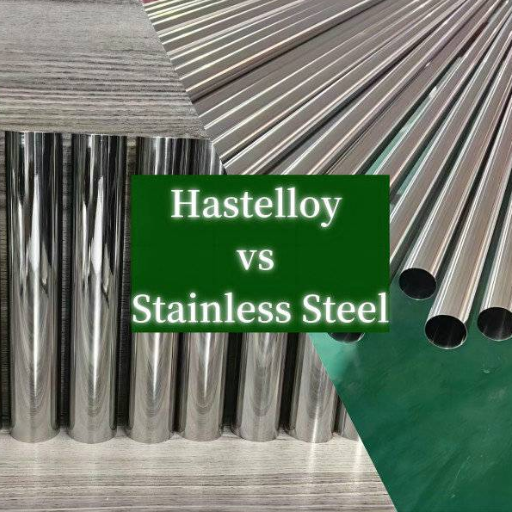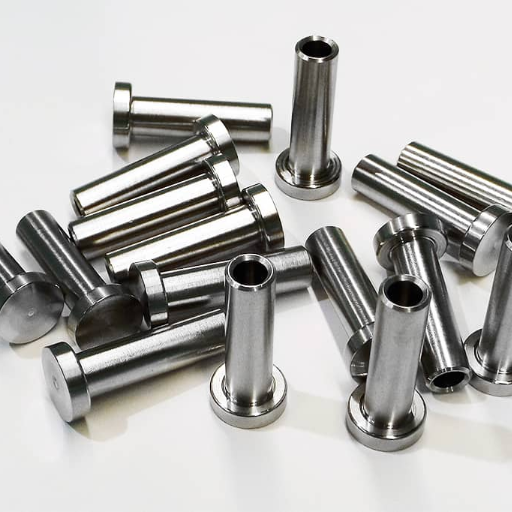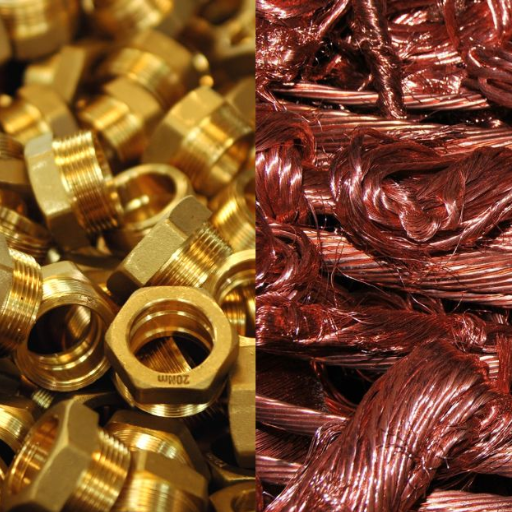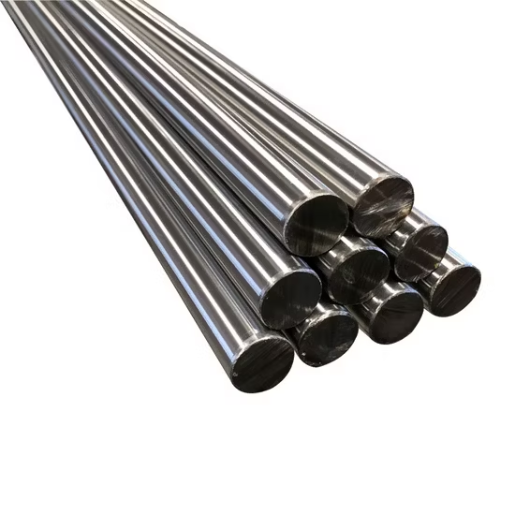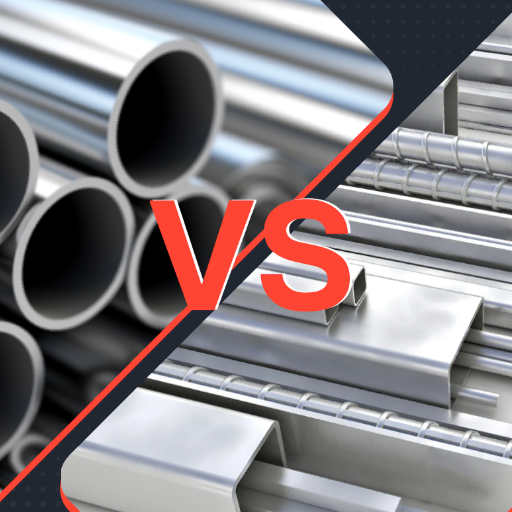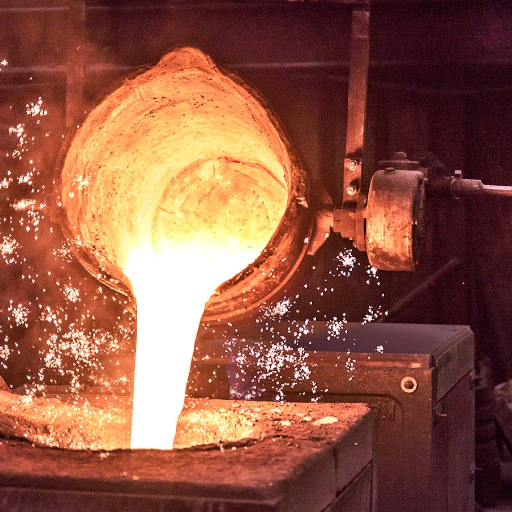Stainless steel used in microwaves comes with a wide array of concerns and conflicting advice. In this guide, we will try to resolve the most critical concern as to if stainless steel is microwaveable or not while also explaining everything that needs to be understood. We will look into the fundamental rules of microwaves, the stainless steel in a microwave oven, and what might be the dangers or problems, if any, involved with it. This article will also explain various conditions stainless steel can be used safely and tips to maximize safety and performance at the same time. With the conclusion of this guide, you will understand how to interact with stainless steel in microwave contexts and what decisions can be made on its use.
Can You Put Stainless Steel in the Microwave Safely?

The stainless steel should not be used in the microwave as a short answer and stainless steel tends to reflect microwave radiation which causes uneven heating and can further damage the microwave’s internal parts as well. The microwave also has potential fire hazards due to the metal interacting with microwave energy. If the container is marked microwave-safe, then certain stainless steel containers may be used. It is best to check the manufacturer’s guidelines before attempting to use any stainless steel item in the microwave.
Why Most Stainless Steel Containers Are Not Microwave Safe
The main reason microwave ovens do not use stainless steel containers is because of the material’s interaction with microwave radiation. As previously noted, difference stainless steel containers do not have specialized microwave-safe properties like glass or certain plastics. Rather, they reflect microwave energy which prevents food from being properly heated. Additionally, the stainless steel may cause sporadic sparking due to the formation of concentrated electric fields. On top of that, due to the properties of the material, the microwaves may not properly heat food at all. Because of the aforementioned reasons, unless a container is characterized as microwave-safe, it is better to stick to alternatives. Universal microwave safety guidelines must be observed to avert Stainless steel foils’ potential hazards.
The Risk of Sparking and Arc in Microwave Ovens Due to Electrical Conductivity
Metal have the physics principal of electrical conduction, leading to sparking and arcing within microwave ovens. The moment stainless steel and aluminum is placed in a microwave, the materials reflect microwave radiation rather than being absorbed, due to their metal properties. It creates sharp points of energy which charge leading to concentrated electric fields.
Further, microwave ovens use microwave energy to heat food by stirring the water molecules. The presence of conductive materials also disturbs this process, causing energy to be distributed unevenly within the cavity. Such inequality not only destroys the appliance but can also create a fire risk. It is important to adhere to the manufacturer’s instructions and not place metal items within the microwave unless deemed microwave-safe.
Exceptions: When Stainless Steel Can Be Used in Microwave Ovens
Steel’s usage in a microwave oven is permitted on very rare occasions and under strict controls. For instance, some manufacturers create designated microwave-safe stainless steel containers or objects. Such containers are made to enable lower chances of arcing and wreckage of the appliance. In addition, some stainless steel parts like rotating racks or grills that come with the microwave are made for use and are claimed not to interfere with the device’s energy distribution system.
Caution is warranted here for the reason that, even in these situations, stainless steel must never touch the sides of the microwave cavity to avoid sparking. Additionally, all stainless steel parts with sharp edges or other metallic decorations that could cause arcing should be excluded. Hazard safety checks verify that all items comply with the microwave instructions, paying close attention to the manufacturer’s safety limitations. In case of suspicion about compliance, it is deemed safe to restrict the use of stainless steel.
What Makes Stainless Steel Food Containers Microwave-Safe?

Stainless steel food containers can only be classified as microwave-safe if certain conditions are fulfilled. To begin with, the container must expressly indicate that it is microwave-safe. This suggests that it has undergone testing and has been created not to spark or break during microwave use. The container’s design does not have any sharp corners or protruding edges which can cause arcing and does not have any nylon coatings and paints which can deteriorate in the microwave. The container’s size and position should guarantee that there is no excessive microwave energy reflection that can damage the appliance. Always check the manufacturer’s recommendations to verify the compatibility of the container with microwave use.
Special Designs of Microwave-Safe Stainless Steel Food Containers
Designed microwave-safe uses, stainless steel containers microwave ovens focus on archetypes that reduce or eliminate the danger of metals in microwave ovens. For example, these containers often have rounded edges and smooth determinate finishes to retard sparking or arcing caused by rough finishes and sharp edges. Some designs employ layered construction using stainless steel enclosed in materials that microwave allow microwaves to enhance permeate for safer and more efficient heating. These containers incorporate venting features such as silicone-sealed lids that can be adjusted to allow for the venting of steam while reducing pressure buildup. To improve safety, manufacturers often apply non-reactive finish that do not corrode onto the food contact surfaces. Stainless steel containers should be screened for the ability to be used for microwaves; recommendations and labeling should be checked since not all of them meet the required standard.
The Role of 304-Grade Stainless Steel in Microwave Safety
Due to its non-corrosive, strong, and non-reactive properties, 304-grade stainless steel is commonly used in food storage containers. However, when thinking of microwaves, caution should be implemented. Risk of sparking due to metal edges or imperfections poses a danger for all types of steel in the microwave, and the same goes for uneven heat distribution. Rounded edge design has been employed in many stainless steel containers microwavable safe ones to counter these risks. Aside from being non-porous, making it less prone to retaining contaminants, 304 stainless steel enhances food safety. Manufacturer guidelines and proper labeling of the container as microwave-safe should always be followed to safely use 304-grade stainless steel containers in microwaves.
How to Identify Genuine Microwave-Safe Stainless Steel Containers
To find false stainless steel containers purported to be safe for microwaves, check for a visible “microwave-safe” mark on the product label or pack. This ensures the container has been tested and certified for microwave usage. Also check if there are other product specifications confirming that the container is made from 304 or 18/8 stainless steel as they have a high resistance to heat and corrosion. The container should have smooth rounded edges and should not have any sharp corners. These features are usually designed to help minimize some safety hazards that can occur while using a microwave. There are other reputable manufacturers who offer microwave warnings in their manuals or on their websites which can serve as additional confirmation. Do not rely on containers that provide little to no information because they do not comply with needed safety regulations.
Alternatives to Stainless Steel for Microwave Food Storage

Along with glass containers which are deemed microwave-safe, stainless steel alternatives for microwave food storage include borosilicate glass which is non-reactive, able to withstand extreme temperatures, and does not leach dangerous substances into food. B orosilicate glass is exceptionally sturdy and less likely to fracture from thermal stress. Always look for the microwave-safe marking and do not expose the glass to drastic temperature changes to minimize breakage.
Another reliable option is microwave-safe ceramic dishes. These dishes perform well under high temperatures and trap heat efficiently. The downside is that the ceramic should not have metal finishes or glazes containing lead as it can pose safety threats when microwaved.
Less expensive and easily accessible models can be found in BPA-free plastic as long as they are labeled microwave-safe. These types of plastic vessels are made from materials that do not soften or leak dangerous chemicals at elevated temperatures. Exact instructions related to maximum temperature limits should be adhered to, along with the stipulation that oily or fatty food should never be reheated because they rage and produce excessive heat.
By taking these materials into account, users can choose the most optimal food storage tools to ensure safety, ease, and convenience when microwaving without compromising effectiveness.
Best Microwave-Safe Materials for Food Containers
When choosing materials for use in microwaves, the following materials are some of the safest options available:
- Tempered Glass
Whether the application is use within the microwave or not, tempered glass is an excellent choice due to its high durability factors and resiable thermal shock resistante. It does not leach chemicals into food, ensuring safety even at high heat. Always check for glass labels that indicate and guarantee microwave safety, as tempered glass is not specially designed for this purpose.
- Ceramic
Ceramics have proven microwave reliability and can be used without concern as long as no metal decoration or finish is present. Their heat resistance and distribution is exceptional. To avoid any potential danger, look for containers labeled as “safe for microwaves.”
- Microwave-Safe Plastic
Polymers like PP have standing propensities as plastics that mark them ‘microwave-safe’ because they do not leach substances when heated and can withstand high temperatures. You should not use any plastic containers that aren’t labeled hardy for microwaves, as well as avoid reheating excessively sugary or fatty foods, because these factors can be damaging.
Users can ensure appropriate functionality and avoid health dilemmas by selecting verifiable materials with resistance to required vivo appliance and microwave use.
Comparing Stainless Steel Lunch Boxes with Microwave-Safe Alternatives
For ecologically minded people caring about ruggedness, stainless steel lunch boxes have unparelleled durability and a strong resistance to corrosion. Nonetheless, menopausal microwave safe lunch containers made out of BPA free plastic or glass are designed to withstand high temperatures without sacrificing structural compromise or safety. However, these materials are not microwave safe.
Checked pendos dash Template Glass that can be placed in the microwave includes regards and borosilicate glass. These types of surfaced glass are nonporous, thus making them resistant to stains and odors which makes them great for food overheating. Contra plastic, glass and stainless steel are containers are more durable, however, BPA plastic containers are less heavy making them easier to carry. Each of these options serves a different purpose, but with a focus on portability and durability stainless steel excels, while microwave-safe materials adhere safety standards.
Common Mistakes When Using Stainless Steel in Microwaves

- Placing Pure Stainless Steel Items Directly in the Microwave
Steel that is microwave-safe radiates heat rather than absorbing it. This can lead to sparks, fires, or even serious damage to the internal components of the microwave. These circumstances could pose a great deal of safety risk in addition to equipment malfunctions. Sparks, fires, or damage to components is considered as safety risks.
- Failing to Check for Microwave-Safe Labels
We could microwave-enable specific containers, but they have to be marked ‘safe.’ However, people often overlook caution.
- Microwaving Food in Stainless Steel Containers with Non-Microwave-Safe Linings
Using sharp utensils while the microwave is running can also lead to problems such as overheating or structural damage within the microwave’s body itself.
- Using Stainless Steel Utensils or Non-Approved Accessories
Warming food while using certain stainless-steel cases that contain soft, non-heat resistant plastic can lead to toxic chemicals leaching into food or melting entirely.
Eliminating these issues ensures sustained plenitude of the microwave while also ensuring functionality is not limited. Always check fabricant’s instructions before incorporating any stainless-steel component into the microwave.
Why Metal Sparks in a Microwave Oven
When a metal container is placed inside a microwave, sparks may form. This is attributed to the metal’s shimmering properties due to its reaction to the microwave’s electromagnetic waves. When microwaves come into contact with a mid, weaver metal, the metal’s electrons are excited, creating substantial fences of power. Sharp metal edges serve to compound this phenomenon, in becoming capable of producing an electric field strong enough to ionize the air around it, which then results in sparks. This is called arcing and can damage the internals of the microwave and in some situations cause a fire. In order to mitigate these problems, one should not place any metal objects, including utensils and aluminum foil, in the microwave unless the manufacturer explicitly states it is safe to do so.”
The Dangers of Trying to Heat Food in Regular Stainless Steel Containers
Regular stainless steel container usage in microwaves bring severe risks due to their reflectivity and incapability to be penetrated by microwaves. As the microwave is in operation, the waves come into contact with the steel surface, which leads to reflection in place of absorption. This may result in damage to the appliance as well as uneven heating of the food within the equipment. The contours or points on the container can also lead to concentration of electric fields or arcing that can pose serious risks from fires. Furthermore, the food within the steel boxes is not able to be evenly microwaved due to the prevention caused by steel. This leads to formation of nonuniform temperatures within the food, which may prove to be dangerous for health. Because of these reasons and more, it is important to make ur of them or microwavable plastics so as to maintain safety and efficacy whilst operating the microwave.
How to Safely Reheat Food Stored in Stainless Steel Containers

To reheat food stored in stainless steel containers, it is best to first remove it and place it into a glass or plastic dish approved for microwaves. This allows microwave energy to have direct contact with the aim for the heating to happen uniformly. Warming of stainless steel containers in microwaves is dangerous. It could cause fire or various forms of damage to the microwave oven like sparks. Another option would be to uncase the food and put it in a microwave, using a stovetop or oven. This would only be allowable if the container used is suitable for those equipments. Also remember to reach a safe temperature of 165 deg. Fahrenheit to avoid contamination of bacteria from the food.
Transferring Food from Stainless Steel to Microwave-Safe Containers
Best Practices for Food Storage and Reheating
- Proper Storage Containers: Food can be adequately maintained when stored in air-tight and leak-proof containers to reliably preserve use while managing leakage and contamination. Glass containers or plastic ones without BPA are suitable for refrigeration and microwaving as there is a reduced risk of chemicals being harmful during the microwave process.
- Refrigeration Guidelines: Remove food items that can perish from the freezer within two hours after cooking or one hour for temperatures above 90°F. Keep refrigerator set at 40°F or lower to contain the growth of bacteria.
- Freezing Tips: To maintain food for long durations, freezing should be done at 0°F or lower. Containers should have correct label for stalks set on a first in first out basis. Expired materials may otherwise be used. Freezer burn can be avoided if vacuum sealing is used.
- Safe Reheating Temperatures: To eliminate toxic bacteria, left over food should be reheated it 165°F, and beyond, along with recommended use of a food thermometer. As microwaves do not heat evenly, ensuring accuracy becomes paramount.
- Avoid Reheating Certain Foods: Foods such as rice or egg along with some additional proteins pose the risk of bacterial infection if they are not stored correctly. Great care needs to be applied for reheating to prevent sickness caused by foodborne bacteria.
- Avoid Overcrowding in the Microwave: Do not overfill. Use reasonable distances between items for best heat distribution. Stir dishes cooked in microwave ovens half way through the process and let the them stand for some time to rest for even temperature distribution throughout the dish after microwaving.
Following these steps will help retain the safety, freshness, and quality of food you intend to preserve and reheat.
Where to Find Genuine Microwave-Safe Stainless Steel Containers

Authentic microwave-safe stainless steel containers are available at reputable kitchenware suppliers, both online and at physical locations. When shopping online, stores like Amazon, Walmart, and specialty kitchenware websites such as Williams Sonoma and Sur La Table offer detailed descriptions and reviewMicrowave; rating products provides verification for compatibility. In-store, check out Target and Bed Bath & Beyond, along with specialized faculty stores, where salespersons can assist in verifying the microwave safety of the stainless steel containers. Store information needs to be backed with signs of a warranty that guarantees microwave safety, as well as guidance from the manufacturer.
Top Brands Offering Microwave-Safe Stainless Steel Food Containers
- ECOlunchbox
ECOlunchbox is a highly regarded company for their non-toxic, sustainable lunchbox products that focus on stainless steel food containers. Each ECO lunchbox product is specifically designed with a safety concern for the food and includes extensive documentation regarding microwave compatibility. ECOlunchbox is considered the optimal choice for anyone focused on reducing their carbon footprint.
- U-Konserve
U-Konserve provides various steel food storage containers designed with durability and functionality. While many of their containers are categorized as microwave-safe, it is recommended to check every specific container guidelines issued by the manufacturer. Their designs are innovative in regards to user-friendliness while still being environmentally responsible.
- LunchBots
LunchBots is a well-regarded industry brand for its durable stainless steel LunchBots containers. Certain models are designed to be compatible with microwaves. Attention is paid to instructive documentation and good design so consumers are able to make confident selections relevant to their needs. Additionally, practical designs streamlined for contemporary lifestyles are matched with premium materials.
References
Frequently Asked Questions (FAQ)
Q: Is it safe to use stainless steel containers in a microwave?
A: Generally, you should not use stainless steel containers in a microwave. Microwaves cannot penetrate metal, which can cause uneven heating and potentially damage the microwave or the containers.
Q: What types of stainless steel are considered safe for microwave use?
A: High-quality stainless steel, such as those made of 304 grade, is not recommended for microwave use. Instead, look for containers specifically labeled as microwave-safe.
Q: Why can’t I put stainless steel in the microwave?
A: Putting metal in the microwave can cause sparks and fires due to the way microwaves work. This is why it’s essential to avoid using any metal, including stainless steel, in the microwave.
Q: Are there any exceptions for using stainless steel in microwaves?
A: There are some microwave-safe stainless steel containers available that allow for safe usage. However, these are specifically designed for microwave use, so it’s easy to find microwave-safe stainless steel food containers that meet safety standards.
Q: How can I heat food safely in a stainless steel container?
A: Instead of using stainless steel, consider transferring your food to a microwave-safe glass or ceramic container before heating it in the microwave. This will ensure that your food heats evenly and safely.
Q: What should I do if I’ve been hesitant about using stainless steel in the microwave?
A: If you’ve been hesitant about using stainless steel, it’s best to stick to containers specifically designed for microwave use. If you have questions, don’t hesitate to contact us for recommendations on safe materials.
Q: Are there any guidelines from associations regarding stainless steel and microwaves?
A: The British Stainless Steel Association provides guidelines on the safe use of stainless steel in various applications, but they recommend against using stainless steel in microwave ovens due to safety concerns.
Q: How can I find microwave-safe stainless steel food containers?
A: You can find microwave-safe stainless steel food containers in a variety of stores or online. Look for labels indicating that the containers are specifically designed for use in a microwave.

